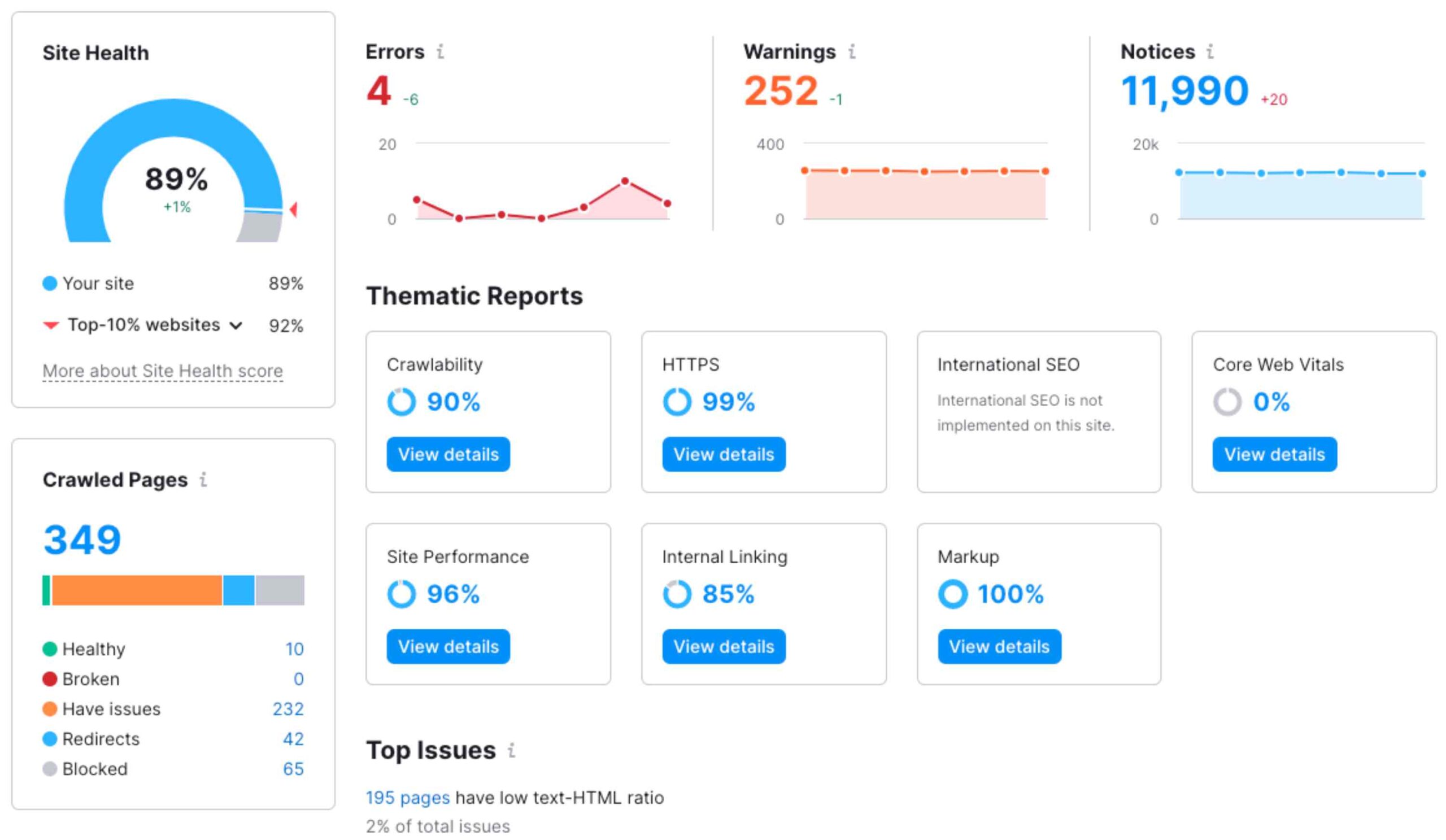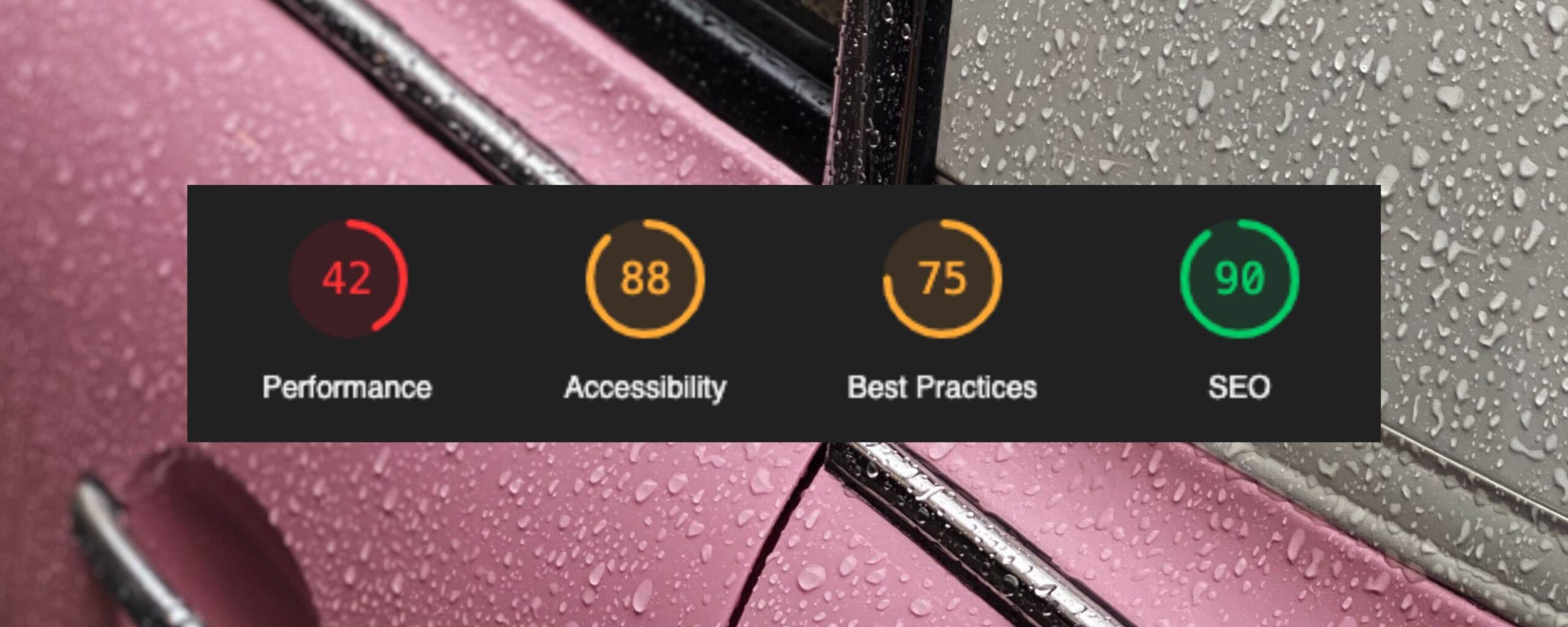Trying to wrap your head around the requirements of website maintenance can be confusing for anyone who doesn’t work in the digital or web development space.
Plugins, security patches, SEO, JavaScript, tracking codes, light house reports – there is so much jargon and terminology to get your head around. It is easier to look the other way – to stick your head in the sand and pretend it doesn’t exist. But that approach will end up backfiring and you may end up needing to build a whole new website.
But!
What if I told you that getting your website maintenance done is just like getting your car serviced?
In this article, I’m continuing my monthly series of ‘Beginner’s Guides’ – where I break down different (and often daunting) digital marketing concepts. Using metaphors to help you understand the terminology, purpose, and desired outcome of each topic.
Benefits of Regular Website Maintenance
Before we jump into the metaphor, I want to cover off some of the top benefits or reasons that website maintenance is a worthwhile investment for your business:
- Validates your cyber security insurance – you may find that your very expensive cyber security insurance requires certain security measures to be met and maintained.
- Improves your performance in Google – regular website maintenance ensures that a dip in your Google rankings is identified and rectified before it is too late to recover.
- Fixes minor issues before they become big, expensive issues – security patches, broken functionality and other critical issues are fixed in a timely manner.
- Extends the longevity of your website – Websites date quickly due to the fast moving digital and technology space. Regular website maintenance gives you a fighting chance of keeping up and can extend the lifespan of your website by years.
- Keeps your website up to date with the latest technology, best practices standards, and trends – you want your website to evolve in line with technology and best practices. You want it to feel modern and be an early adaptor for any changes to usability and inclusivity.
 How Website Maintenance Works: A Metaphor
How Website Maintenance Works: A Metaphor
Think of your website as though it was a car.
Most people don’t understand the inner workings of their vehicle and its motor. Yet they understand the importance of getting it serviced regularly so that it doesn’t breakdown, leaving them stranded on the side of the road.
Websites are just the same. And just because you don’t understand the inner workings of your website is no reason to avoid getting it serviced regularly to extend its lifespan.
A brand-new car can last a long time – if you look after it. There are small day-to-day things that you can do to help extend the lifespan of your vehicle – like using premium fuel. And there are different types of logbook services as well – one for every 10kms and a more in-depth one for every 100kms.
There is also a big difference between getting a qualified mechanic to do work on your car – ensuring you maintain your warranties – and getting your mate from next door to look under the hood.
Website Servicing vs Car Servicing
Your website needs a basic service every 3-6 months.
The frequency will depend on the complexity of your website. If you have a basic WordPress website with a handful of content pages and blog, then you can probably get away with every 6 months. If you have a large e-commerce website that processes payments, stores customer data, integrates with other tools or apps – then you’re going to need to get this done more frequently.
The cost of your website servicing should be similar to a standard car service – $300-500. There should be a list of standard things your website looks at – where your car service should include an oil change and pumping the tyres as standard, your website maintenance should include updating plugins, themes, and WordPress files.
Where your car service runs tests on your electrical and safety systems – your website service should run tests on your website security, website speed, and overall site health.
And just like a car service – if something needs to be repaired or fixed then then you will likely be given a quote or estimate to fix it.
Make sure that the person doing your website maintenance clearly explains the problem and the proposed solution. If you are uncertain, ask them to explain how important the problem is – does it need to be fixed immediately, or can you put it off for a few months? Is it a requirement or a nice-to-have? If you’re uncertain, don’t be afraid to seek a second opinion.
100km Service for Your Website
Once a year you should also look at getting a bigger ‘service’ or maintenance check done on your website. There are few reasons for this:
Technology Moves Quickly
What was ‘best practice’ for your website a year ago, may have shifted slightly in the past 12 months. If you don’t keep up with the shift in technology, your website will get left behind. In a few years’ time you may find that your website has become outdated, and it is more affordable to build a whole new site from the ground up than to try and fix the existing website.
Google is a Fickle Beast
Google makes at least one big change to its algorithm each year as well as a handful of minor changes. The algorithm dictates where your website will rank in Google. So having an SEO audit done on your website at least once per year along with having SEO work done to realign your website and copywriting with Google’s current requirements will help make sure your site continues to generate organic website traffic.
Security is Serious Stuff
Digital security and data privacy are two areas that are currently undergoing significant regulatory change. The way that your website handles data, uses cookies, or secures itself against online threats can now be subject to significant scrutiny.
If your site has a data breach and it is proven that you were not handling data in line with best practice, then depending on your industry, you may be facing some pretty big consequences.
Furthermore, if you do experience a data breach and you cannot prove that your website security was up to scratch, then any cyber security insurance you have may become void.
BeKonstructive Marketing’s Website Maintenance Checklist
Every digital marketing and web development company is going to have their own process and checklist for performing website maintenance for their clients. At BeKonstructive Marketing, we have it set up as a recurring service that takes place quarterly, with one big website maintenance audit annually.
I’ve listed the exact deliverables of this service below, to help you get a feel for what you might expect to see in a website maintenance service.
The 10km Service:
The focus of this quarterly service is website security and website health. It includes:
- Updating all plugins, themes, and WordPress software on your website
- Running a Website Health Audit; fixing any critical errors like broken links, 404 errors etc. Providing a full Website Health report with additional recommendations for improvements.

Image shows an example of a website health report, performed as part of a Website Maintenance Service
- Running an SEO Audit; providing current website ranking data, keyword research and traffic analysis. Report provided with recommendations to improve SEO performance as well as highlighting any opportunities.
- Running a Google Lighthouse Report; a Lighthouse Report tests the speed of your website and compares it against the industry standard. We will interpret the report for you and present any recommendations or areas that require improvement.
- We compile all the above into one report that clearly explains all works undertaken as well as any critical issues that need to be addressed immediately. We also include a recommendations section for any minor or less critical works, and an opportunities section for any areas that we think would have a good ROI were you to invest in them.
The 100km Service:
The 100km Service is an annual website maintenance service that covers all the above as well as any regulatory updates from the past 12 months. It includes:
- All the above items.
- Re-optimisation of your website content to address any updates to the algorithm from the past 12 months.
- Reviewing how your website collects and stores data and customer information. Updating the APIs/software as required and updating any cookies or data collection statements as required. Review of your privacy policy – we don’t update this for you but will let you know if you need to have a lawyer update it to bring it in line with current privacy laws and requirements.
- UX Audit; a UX audit is a usability audit – it looks at how ‘usable’ your website is, and makes recommendations for your site navigation, page layouts and the way you display information. It also looks at accessibility and inclusion – as technology evolves, we have access to better tools that make our website more accessible to people with a wide range of abilities. Certain fonts, colours and styles are difficult for people with vision impairments, dyslexia, and autism to view. We will fix any minor issues such as font size and spacing and make recommendations for larger problems.
- As with the 10km service, we provide a detailed and easy to understand report that breaks down all the work we have completed, any critical items that need to be addressed as soon as possible, and any minor issues or recommendations that we believe would benefit your website and audience.
What’s Next?
This article was a basic overview of website maintenance – why it is important and what it should include. Hopefully you found the car servicing metaphor helpful. The important thing to remember is that even though you don’t fully understand everything the mechanic says to you about your car, doesn’t mean you avoid getting it serviced.
Websites are the same – don’t be afraid to shop around and find a website “mechanic” that you trust and enjoy working with, and don’t be afraid to ask for a second opinion on anything you’re not sure about.
If you would like to learn more about BeKonstructive Marketing’s website maintenance service, then please get in touch.




